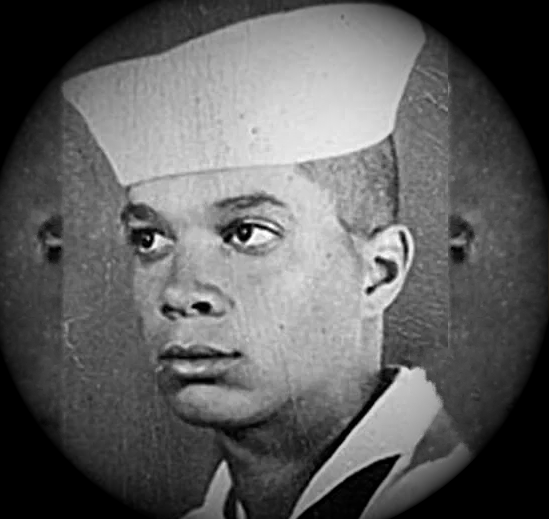A deep dive into one of Arkansas’ most disturbing unsolved murders and the web of corruption that may have protected the killers
The train engineer spotted them too late. Two teenage bodies lying motionless between the rails, covered from waist to knees by what appeared to be a tarp. Despite hitting the emergency brakes, the 50-mph locomotive couldn’t stop before running over Kevin Ives (17) and Don Henry (16) in the pre-dawn darkness of August 23, 1987, dragging their bodies half a mile down the tracks near Alexander, Arkansas.
Their deaths would reveal a tangled web of alleged government corruption, drug smuggling, and a string of murders that continues to haunt central Arkansas to this day.
A Cover-Up Begins
When Curtis Henry received the devastating call that his son Don had been found dead, authorities quickly offered a simple explanation: the boys had smoked marijuana and fallen asleep on the tracks. Medical examiner Dr. Fahmy Malak officially ruled the deaths accidental, claiming the teenagers had been in a cannabis-induced “deep sleep.”
But paramedic Shirley Raper immediately noticed something wrong at the scene. “The blood from the bodies and on the body parts we observed was dark in color,” she noted in her report. “Due to our training, this would indicate a lack of oxygen in the blood and could pose a question as to how long the victims had been down/dead.”
Something wasn’t adding up. Curtis asked a hunter friend to examine the tracks, who found surprisingly little blood for two bodies struck by a train. How could marijuana render someone unconscious enough to remain on train tracks as a locomotive approached, horn blaring?
Linda Ives and Curtis Henry refused to accept this explanation and pushed for answers.
The Truth Emerges
Their persistence led to the bodies being exhumed. Atlanta medical examiner Dr. Joseph Burton conducted a second examination and made shocking discoveries: Don Henry had been stabbed in the back, and Kevin Ives’ skull had been crushed prior to them being placed on the tracks.
Six of Burton’s peers agreed with his findings. On September 9, 1988, a grand jury reclassified the deaths as homicides.
But just as the truth began emerging, witnesses started dying.
Silenced Witnesses
Keith Coney told friends and family he had witnessed two police officers killing the boys. Two days later, his throat was slashed. While trying to flee his attacker on a motorcycle, he crashed and died. No autopsy was performed.
Keith McKaskle, another informant in the case, was found stabbed to death in his carport in November 1988, covered with a curtain.
Greg Collins never made it to his grand jury testimony in January 1989. He was killed by a shotgun blast to the face.
Boonie Bearden disappeared in March 1989 after being subpoenaed to testify. Only an article of his clothing was ever found.
Jeff Rhodes told family members he knew too much about the murders. Shortly afterward, he was found in a dump with most of his head blown off by a shotgun blast, his remains set on fire.
Jordan Ketelsen, who allegedly had information about the boys’ deaths, was found dead from a shotgun wound in June 1990.
One by one, potential witnesses were silenced.
The Mena Connection
The railway where the boys died wasn’t just any stretch of tracks. Multiple witnesses reported seeing low-flying aircraft in the middle of the night during the months before the murders. Citizens had filed numerous reports, but police never investigated.
These sightings aligned with rumors of drug drops in the area, potentially connected to operations at the Mena Intermountain Municipal Airport about 135 miles west.
During the 1980s, this small airport allegedly served as a hub for major drug smuggling operations. Barry Seal, a former commercial pilot turned smuggler and later DEA informant, reportedly ran a massive drug importation operation from Mena. It’s estimated that $3-5 billion worth of drugs moved through this rural Arkansas airport.
According to some sources, this operation continued with the knowledge of various government agencies. The Senate Foreign Relations Committee stated that cases related to Seal and the airport were dropped due to “potential National Security risks.”
Eyes in the Night
On the night Kevin and Don died, several witnesses saw something disturbing.
Ronnie Godwin was driving home when he pulled over near a grocery store. There, he observed two men he believed to be police officers with two teenage boys. One officer pushed a boy against a phone booth while another boy knelt on the ground. The men loaded the boys into their car and drove away. When they returned minutes later, the boys were gone, replaced by what looked like a garbage bag in the backseat.
Another witness, Mike Crook, later identified one of the officers as Kirk Lane, a narcotics detective. Crook claimed he witnessed the officers arguing with the boys, beating them unconscious, and loading them into their vehicle.
Sandy Duncan confirmed seeing both boys at the grocery store around 4:00 a.m., shortly before they were killed.
Obstructed Justice
As investigators dug deeper, they hit walls of resistance.
Jean Duffey, appointed head of a drug task force investigating narcotics trafficking in central Arkansas, began linking public officials to illegal drug activity. Her task force interviewed people near where the boys were murdered and discovered rumors of drug drops in that area. A confessed drug dealer testified she had participated in an “officially sanctioned” drug ring and picked up cocaine dropped in the same area where the boys died.
But Duffey’s supervisor had given her strange instructions: she could investigate anyone except public officials. When she ignored this directive, her task force was dismantled in November 1990.
A federal grand jury investigation into public corruption in Saline County was similarly shut down by U.S. Attorney Chuck Banks in 1991, who publicly cleared all Saline County officials. Some grand jurors later contacted Duffey, revealing they had been ready to indict prosecutor Dan Harmon but were sent home without being allowed to vote.
Unanswered Questions
More than three decades later, no one has been charged with killing Kevin Ives and Don Henry.
Were they murdered because they stumbled upon a drug drop? As prosecutor Richard Garrett told “Unsolved Mysteries,” the boys may have “seen something that they shouldn’t have” related to drugs or a meth lab.
Did local law enforcement officers commit the murders? Were federal agencies complicit in covering up the truth to protect larger operations?
The evidence points to a dark intersection of local corruption and national interests, where two teenage boys became collateral damage in America’s shadowy war on drugs.
Linda Ives has never stopped fighting for justice for her son. The killers remain free, perhaps protected by powers beyond the reach of ordinary justice.
And somewhere in rural Arkansas, train tracks still run through the night, carrying the echoes of silenced voices and untold truths.
HighKeySus News documents verifiable cases and overlooked historical events with rigorous standards of evidence. Our mission is to shine light on documented incidents that deserve wider public awareness.


